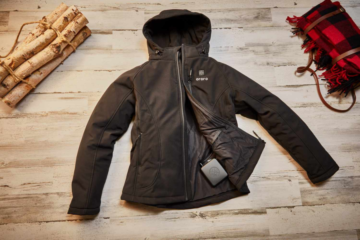Wearing a kimono is not just about putting on a garment; it’s about embodying a rich cultural tradition with elegance and respect.
Originating from Japan, the kimono has evolved over centuries, and today, its timeless appeal transcends borders, making it a cherished choice for various occasions.
Whether you’re attending a formal event or simply want to embrace its beauty in everyday life, kimono can enhance your style and appreciation for its cultural significance.
This guide will take you through the essential steps and tips to wear a kimono with confidence and grace.
Understanding the Kimono
Before diving into the practicalities, it’s essential to understand the significance of the kimono in Japanese culture.
Traditionally worn for special occasions such as weddings, tea ceremonies, and festivals, the kimono symbolizes elegance, respect for tradition, and attention to detail.
Its design, fabric, and patterns often reflect seasonal changes and personal or familial affiliations, making it a deeply meaningful garment.
Choosing the Right Type of Kimono
Kimono styles vary greatly depending on the occasion, season, and gender. For women, options include furisode (elaborate, long-sleeved kimono for unmarried women), komon (casual, everyday kimono with repeating patterns), and more formal options like iromuji (single-color kimono often worn for tea ceremonies).
Men typically wear darker, simpler kimono with subdued patterns. Choosing the right type involves considering the event and your personal style.
Mastering the Components
A kimono consists of several components, each with specific names and functions. Understanding these parts is crucial for both wearing and appreciating the kimono:
Kimono (Gofuku):
- Obi: Wide belt tied around the waist.
- Obijime and Obidome: Accessories for securing the obi.
- Obiage and Obiita: Accessories for shaping and securing the obi knot.
- Tabi: Split-toe socks worn with zori or geta sandals.
Dressing in Layers
Dressing in a kimono involves several layers and meticulous attention to detail:
- Undergarments: Start with a juban (kimono undergarment).
- Kimono: Put on the main kimono robe, ensuring it’s draped evenly.
- Obi: Tie the obi firmly around the waist, forming an appropriate knot (e.g., taiko, bunko).
- Final Adjustments: Smooth out wrinkles and adjust the collar (eri) and sleeves (sode) for a polished look.
Tailoring and Adjustments
While traditional kimono sizes are quite versatile, achieving a perfect fit often involves minor adjustments and considerations:
- Length: Ensure the kimono hemline is adjusted to the appropriate length, traditionally just above the ankle.
- Obi Placement: The obi should be positioned at the natural waistline and secured snugly but comfortably.
- Sleeve Length: Sleeve length signifies formality; adjust accordingly for the occasion.
Enhancing with Accessories
Accessories play a crucial role in complementing the kimono:
- Zori or Geta: Choose appropriate footwear depending on the occasion and kimono type.
- Kanzashi: Ornamental hairpins often worn with formal kimono.
- Haori: Kimono jacket worn over the main robe for added warmth or formality.
- Handbag (Kinchaku): Small purse traditionally used for carrying personal items.
Embracing Cultural Sensitivity and Respect
Wearing a kimono is a cultural experience that requires sensitivity and respect:
Appropriation vs. Appreciation: Understand the difference and approach wearing kimono with cultural awareness.
- Research: Learn about the cultural significance of patterns and colors.
- Consultation: Seek guidance from experts or friends familiar with kimono etiquette.
Kimono Styles for Different Occasions
The versatility of the kimono allows for various styles suitable for different events:
- Formal Events: Opt for furisode or tomesode (formal, married women’s kimono).
- Casual Outings: Choose komon or yukata (light cotton kimono for summer festivals).
- Tea Ceremonies: Wear iromuji or houmongi (semi-formal kimono).
Maintaining and Storing Your Kimono
Proper care ensures your kimono remains in excellent condition for years to come:
Cleaning: Follow specific cleaning methods suitable for the fabric (e.g., dry cleaning or hand washing).
- Storage: Fold kimono carefully or hang on padded hangers to preserve its shape.
- Maintenance: Periodically inspect for damages and address them promptly.
Embodying Confidence and Grace
Ultimately, wearing a kimono is about embodying confidence and grace:
- Posture: Maintain good posture to showcase the kimono’s elegance.
- Poise: Walk gracefully and mindfully, respecting the garment’s cultural significance.
- Self-Expression: Use kimono patterns and accessories to express your personality.
Conclusion
Wearing a kimono is more than just fashion; it’s a celebration of culture and tradition. By understanding its components, mastering its assembly, and embracing its significance, you can wear a kimono with confidence and grace, honoring its timeless beauty while making it your own.
Keep an eye for more news & updates on Timesanalysis.Com!



